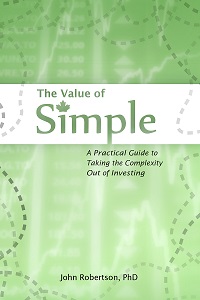Economic Growth Will Not Offset Interest Rate Risk
January 30th, 2013 by PotatoI posted yesterday about some bullish (or not-bullish but not-bearish) arguments on housing and why I think they’re overlooking important factors. Michael James hosted an interesting discussion on his blog where he called me his favourite writer (well, not quite). Larry MacDonald left a comment there about an upcoming article he’s writing for the Globe. I hate to preemptively publish, and want to read it and give it a chance before formulating a response, but unfortunately tonight is the only time I’m going to have this week to write.
Larry’s comment was that “interest rates don’t go up in isolation, as he [referring to Ben Rabidoux, but could equally apply to me] appears to assume. Looking at business cycle dynamics over history, interest rates and household income tend to rise together.”
This is another case of something that is true but not helpful. Yes, the economy will likely be doing better when interest rates do finally go back up (next year, or next decade), and that likely will bring wage growth. But that doesn’t obviate the risk of buying an over-priced house now: the impact of rising rates and that of rising wages and employment are vastly different:
- Rates can rise very quickly, increasing payment obligations equally quickly, whereas even robust wage growth takes time to compound enough to influence affordability metrics.
- The impact of modestly higher rates on affordability/mortgage payments is in all likelihood going to be much greater than the impact of the associated wage growth.
Let’s work through a concrete example: say that you’re an approximately average Toronto couple. Together, you pull in $100k/year, and recently bought a house at $575k, taking on a $460k mortgage fixed for 5 years at 3%. Your monthly payment of $2180 is a touch over 26% of your gross pay: with heat and taxes it’s still (barely) below 32%, so this place is officially affordable!
About halfway through your mortgage term, this ridiculous not-quite-a-recession we’ve found ourselves mired in ends. Job growth picks up, and inflation rages at 10%/year. The Bank of Canada (and the bond market) is forced to respond to this double-digit inflation threat, but in this dream scenario mortgage rates merely go back up to 6%.
You don’t pay much attention because your mortgage isn’t up for renewal until 2018, and by that time surely wage growth will take away the sting. Well, following the first two and a half years of pay freezes at work, things indeed started looking up: with consecutive raises of 10% you’re now grossing $128k, and you’ve paid your mortgage down to a mere $393k.
Then you get the bad news: your monthly payment is now $2800, still representing a touch over 26% of your gross pay. If property taxes and heating costs have also increased 28% due to inflation, then your place is still borderline affordable at 32% of your income. But you were one of the lucky ones: what if your wage growth had merely paced interest rates? Using 2.5 years at 6% wage growth would mean your mortgage alone was 29% of your income — with taxes and heat your GDS would be over 34%. Your house would have to fall in value by 14% (in nominal terms) in order for a buyer in the new environment to buy it with the same affordability metrics as you enjoyed back in 2013.
What if you were one of the unfortunate few whose mortgage renewed the very year the economy picked up and rates increased? You’d have been afforded no time for the inflation you heard so much about to increase your wages… so your mortgage payment alone would top 33% of your pay, and the affordability pressure would attempt to push house prices 23% lower.
So what I’m saying is that the effect of small changes in interest rates on affordability is very likely to be much greater than the offsetting effect of wage growth. Interest rate increases raise the cost of buying a house immediately, but wage growth takes time — and we’re unlikely to see the BoC or the bond market allow wage inflation to rage for a few years before getting around to lifting rates off the zero bound.


 Questrade: use QPass 356624159378948
Questrade: use QPass 356624159378948 Passiv is a tool that can connect to your Questrade account and make it easier to track and rebalance your portfolio, including the ability to make one-click trades.
Passiv is a tool that can connect to your Questrade account and make it easier to track and rebalance your portfolio, including the ability to make one-click trades.